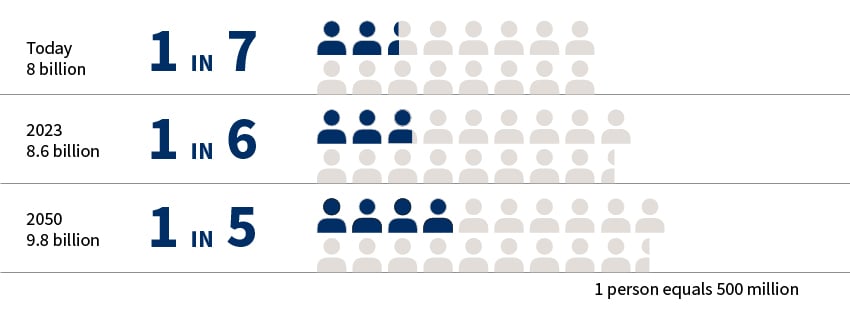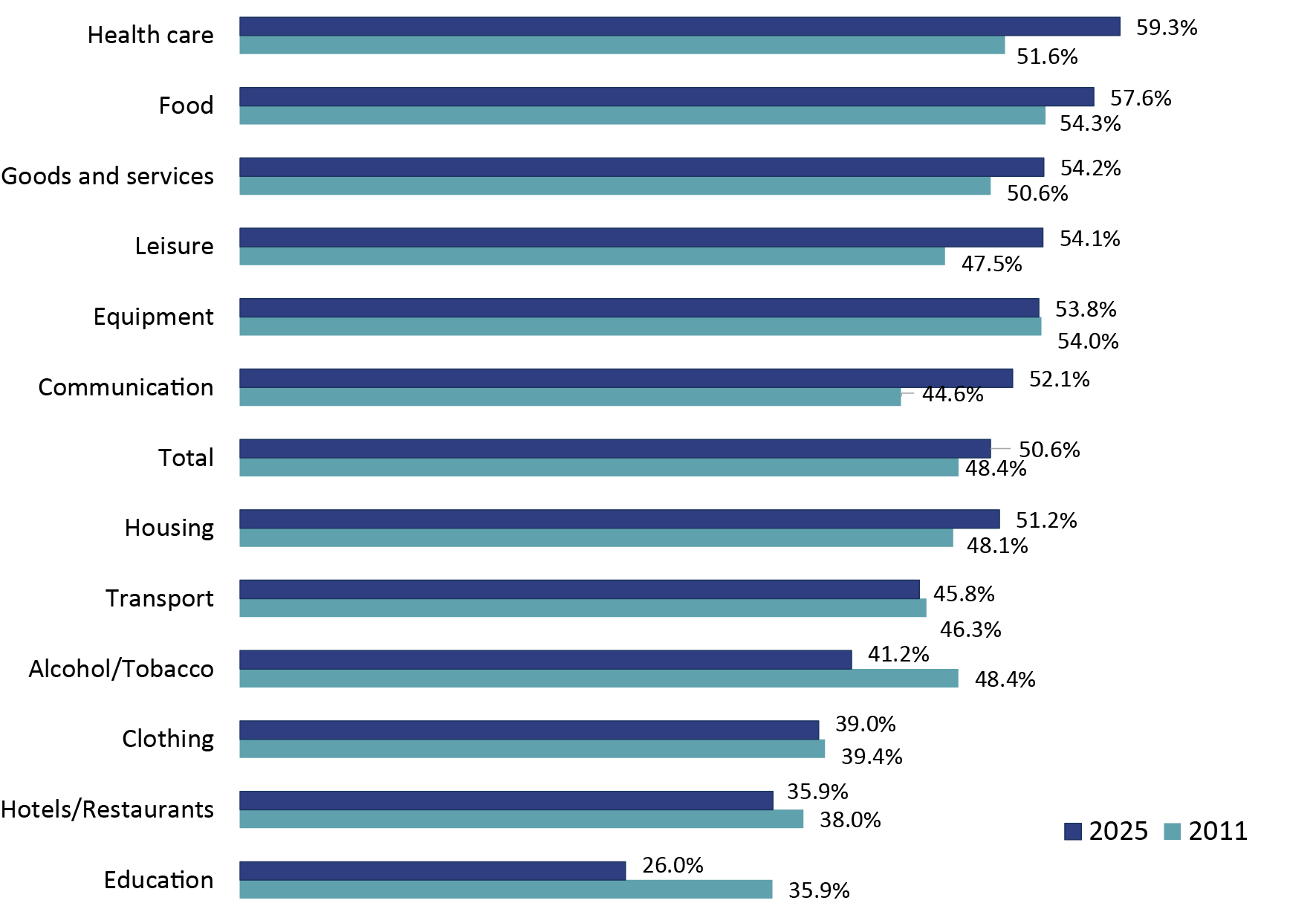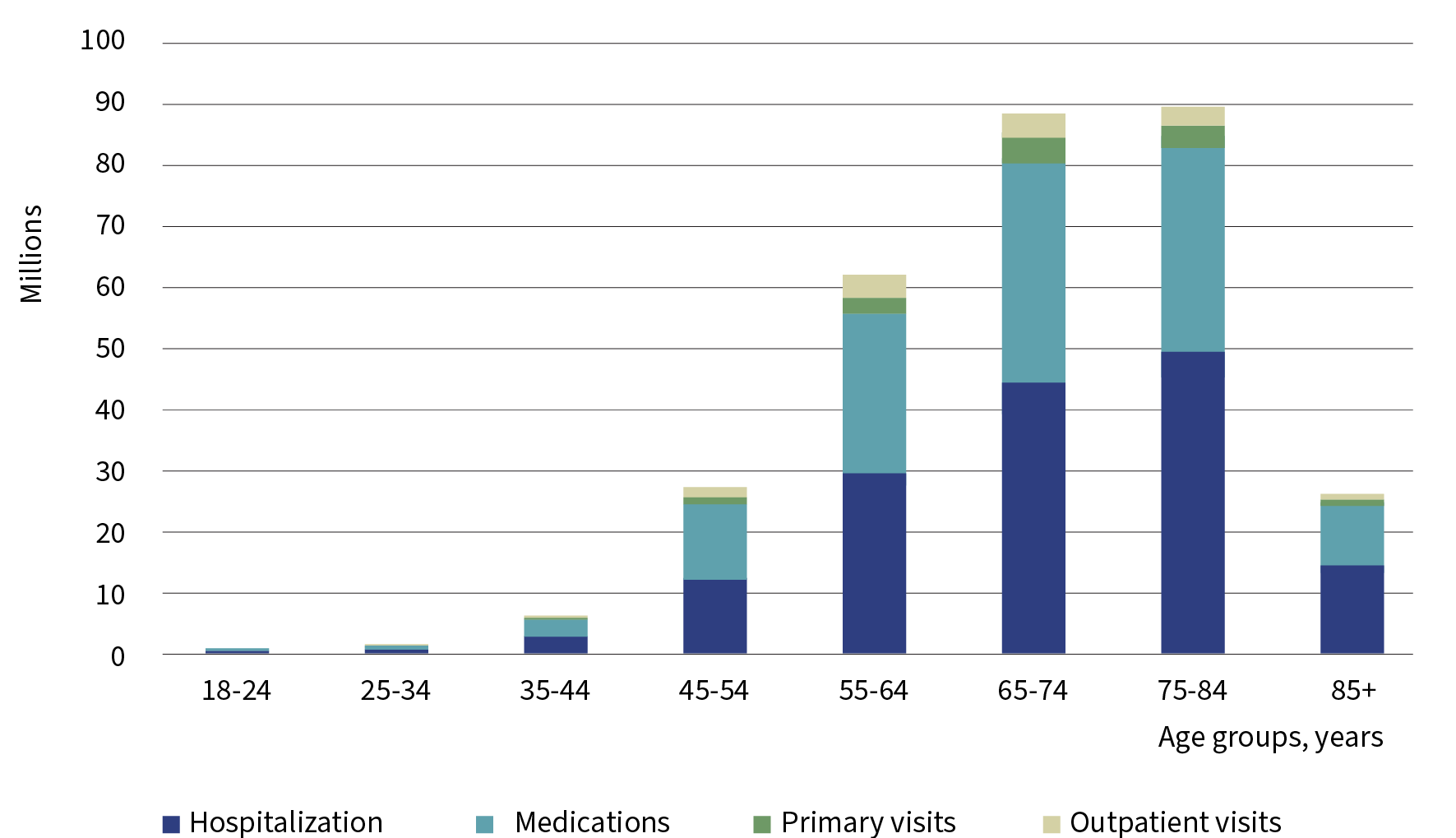Thematic Insights: The Silver Economy

|
Summary According to the World Bank, average global life expectancy shot up from 65 in the early 1990s to 73 in 2020. The hike in longevity stems from better healthcare, working conditions and nourishment as well as access to clean water. Life expectancy is now 80 years in the EU, 77 in the US, and 76 in Latin America and the Caribbean. By 2030, the number of people aged 60 years and above will grow globally to 1.4 billion, outnumbering the total of children aged under 10 years. If everybody over 50 in the EU were one country, it would be the third largest economy in the world.1 This brings about several challenges and opportunities for economic development. The name given to markets that meet senior citizens’ needs is the “silver economy" and it is only set to grow. |
So, what does this mean for investors and how can one capture returns in a market set for profound changes?
The 60-plus segment, or Baby boomers2 as they are often called, is the fastest-growing consumer group in the world (Chart 1). Armed with an increasingly higher spending power and a rising share of overall income, they will influence many corporations given their capacity to consume – their total net worth equates to around USD 70 trillion.3
Chart 1: The number and percentage of people globally aged 60 and above will increase between now and 2050

Source: World Health Organization (WHO), 2022 World Health Organization, Aging and Health
Centred on the specific needs of senior citizens and their consumption of goods and services, the 60-plus segment is expected to represent nearly 60% of consumption growth in Europe and Asia from 2015 to 2030, and nearly 50% in the North America, posing unprecedented economic opportunities and challenges for businesses.
Senior people have more free time and higher purchasing power than the rest of the population and are active consumers (Chart 2).
Chart 2: Spending weights for over 50s by consumption sector

Source: Rothschild & Co Asset Management Europe, CREDOC (Family Budget Surveys 1979, 1984, 1989, 1995, 2000, 2005, 2011, processing of CREDOC data)
Companies have adjusted their products accordingly. In the consumer sector, names such as Estee Lauder and Unilever have introduced various product lines relevant to ‘aging gracefully’.
Meanwhile, Swiss food Group Nestlé has in several markets redesigned instant coffee jars and chocolate boxes by making them easier to hold and open, keeping products accessible to older age groups. Changing sectors, Toyota has aimed at capitalising on the Silver Economy in Japan – often used as "the" case study for the future of global demographics4 – by developing humanoid robots to carry out household duties. A discussion of sectoral winners from the Silver Economy would not be complete, however, without focusing on the healthcare sector. Especially as healthcare spending is growing increasingly as a result of age (Chart 3).
Chart 3: Share of health care costs in different age groups

Source: Share of Healthcare costs in different age groups, Researchgate.
Businesses offering services to public markets, such as oncology treatment for life-threatening illnesses, tend to be operating in highly regulated environments where services are provided to state entities. This market has and always will be harder for investors to navigate. By contrast, the self-pay market aimed at discretionary products such as cosmetics, is where we see the greatest potential for companies. More generally, companies which are positioned to help hold back the effects of ageing and improve quality of life will prove popular with Silver Economy consumers.
Two healthcare sub-sectors in particular to mention are the ophthalmic (eyes) and audiology (hearing) markets. The global adaptive optics market size is projected to reach USD 81 million by 2030, growing at a CAGR of 6.5%, driven by Emerging Market growth, especially in Asia6 . Equally, the global hearing aids market is projected to grow from USD 10.23 billion in 2022 to USD 17.68 billion by 2029, at a CAGR of 8.1% during the forecast period (2022-2029).7 With increasingly deep pockets, we see these two sub-sectors as key discretionary areas of spending, providing opportunities for investors.
The Silver Economy’s reach across a myriad of sectors generates multiple opportunities for investors. Despite investment strategies flourishing in the past few years, many have struggled cornering the market as each company has different means to meet the needs of its customers.
So, where are these opportunities? Below we set out a few case studies to illustrate the far-reaching impact of the Silver Economy and how it is set to create new revenue streams for organisations both in and outside of healthcare.

Danaher
Danaher is a global, diversified manufacturer of life science, diagnostics, and industrial instruments/equipment and consumables. The company is built around the Danaher Business System (DBS), which provides a playbook and a set of tools for continuous operational improvement across the portfolio. Danaher’s shift to healthcare markets has created a less cyclical business in attractive markets with high barriers to entry and impressive recurring consumables revenue streams.

Otis Worldwide
Otis is one of the world's largest elevator and escalator manufacturing, installation and service company. It operates in a highly consolidated industry subject to favourable demographics trends such as urbanization, emerging middle classes and aging which is life safety critical and highly regulated. Otis' customers are loyal and rely on services provided by the company following an important up-front investment, as they tend to favour services providing an upgrade in life quality over price.

Sonova Holding
Sonova is a Swiss midcap amongst the world's largest manufacturers and distributors of high-end hearing aid solutions. In general, the hearing aid market is supported by long-term drivers supporting healthy growth rates, especially in the current context of aging populations. Its products are becoming more homogeneous with real differentiation and Sonova is capitalizing on global trends as well as opportunities in the emerging markets (if you want to read more about Sonova, please read our Company Insights).
|
Inherently heterogeneous, corporations will meet the needs of the Silver Economy in different ways. Careful analysis of ‘silver’ services and goods is needed, therefore, before adopting a specific investment strategy. It is for this reason, that our Advisory team at Rothschild & Co Wealth Management has dedicated time and resources to analysing this market and is ready to advise you on investing in this long-term trend. For further information on how to invest in this sector please contact your client adviser. |
1. The Silver Economy, A study prepared by the European Commission DG Communications Networks
2. The Baby boomers are the generational cohort born after World War II between 1945 and the late 1980s
3. Baby Boomers 2022 Consumer Insights
4. Japan has by far the highest senior population ratio in the world, with 29.1% of its people over 65 years old. Source: Statistics Bureau Japan, Ministry of Internal Affairs and Communications.
5. Annualized rate of growth in the value of an investment over a specified time period
6. Global Ophthalmology Market Research Report (2021 to 2027)
7. Fortune Business Insights, Hearing Aids Market





